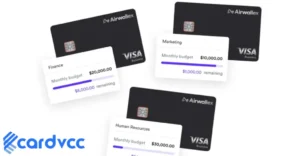Yes, businesses can charge a credit card fee. They must disclose this fee to customers before the transaction.

Credit card fees, often called surcharges, are legal in many regions, including the United States. These fees help businesses offset the costs imposed by credit card companies. Businesses need to inform customers clearly about these fees to maintain transparency.
Businesses should also check local laws as regulations may vary. Proper disclosure ensures customers aren’t surprised at checkout. Implementing a surcharge can help small businesses manage operational costs more effectively. By staying informed about regulations and communicating openly, businesses can navigate credit card fees while maintaining customer trust.
Legal Aspects
Understanding the legal aspects of charging credit card fees is crucial for businesses. This section explores federal regulations and state laws governing these fees. Knowing these rules helps businesses stay compliant and avoid penalties.
Federal Regulations
Federal laws set the groundwork for credit card fees. The Dodd-Frank Wall Street Reform and Consumer Protection Act allows merchants to charge a surcharge. This surcharge covers the cost of accepting credit cards. But, it must be disclosed to customers before a purchase is made.
Merchants must follow the Truth in Lending Act (TILA). This act requires transparency in disclosing credit terms. Failure to comply can result in significant fines and legal issues. Businesses must ensure clear communication about any surcharges.
State Laws
State laws on credit card fees can vary widely. Some states have specific rules that businesses must follow. For example, in California and New York, surcharging credit card transactions is prohibited. This means businesses cannot add extra fees for credit card payments.
Other states, like Texas and Florida, allow surcharges with certain conditions. These conditions often include clear signage and customer notification. Businesses must stay informed about their state’s laws to avoid legal trouble.
Here is a table summarizing state laws on credit card surcharges:
| State | Allowed | Conditions |
|---|---|---|
| California | No | N/A |
| New York | No | N/A |
| Texas | Yes | Clear signage required |
| Florida | Yes | Customer notification required |
Being aware of both federal and state laws ensures businesses operate within legal boundaries. This knowledge protects them from fines and maintains customer trust.
Types Of Fees
Businesses often consider passing credit card fees to customers. There are different types of fees they can charge. Each fee type has its own rules and uses.
Surcharge Fees
Surcharge fees are extra charges added to a customer’s bill. These fees help businesses cover credit card processing costs. Usually, surcharge fees are a percentage of the total bill. For example, if the bill is $100 and the surcharge fee is 2%, the customer pays $102.
- Surcharge fees are only allowed in some states.
- Businesses must inform customers before charging this fee.
- Surcharge fees cannot exceed the cost of processing the payment.
Surcharge fees are common in many industries. They help businesses manage costs better.
Convenience Fees
Convenience fees are charges for using a specific payment method. These fees are different from surcharge fees. They are not based on the total bill amount.
Convenience fees are often charged for online or phone payments. For example, a business might charge $5 for paying a bill online.
- Convenience fees must be disclosed upfront.
- These fees should be a fixed amount, not a percentage.
- Convenience fees are not allowed in all situations.
Businesses use convenience fees to encourage certain payment methods. This can help streamline payment processes.
Impact On Customers
Charging a credit card fee can significantly impact customers. This section explores its effects on customer perception and behavior.
Customer Perception
Customers often view credit card fees as unfair. These fees can create negative impressions. They may feel the business is greedy. This perception can harm the business’s reputation.
Transparency is crucial in maintaining trust. Clearly stating the fee details helps. Hidden fees create distrust. Honest communication can mitigate negative feelings.
Behavioral Changes
Credit card fees can influence customer behavior. Many customers may seek alternatives. They might choose businesses without such fees.
Some customers might switch to cash payments. Others may reduce their spending. This change can impact overall sales. Businesses need to weigh the pros and cons.
| Behavioral Change | Possible Impact |
|---|---|
| Seeking Alternatives | Customer loss to competitors |
| Switching to Cash | Reduced convenience for customers |
| Reduced Spending | Lower overall sales |
Businesses must consider these impacts. Customer perception and behavior are crucial. Understanding these factors can help make better decisions. Always keep customer experience in mind.
Benefits For Businesses
Charging a credit card fee can offer several benefits for businesses. By passing on the transaction costs, businesses can improve their financial health. Let’s explore some key advantages.
Cost Savings
Businesses often pay fees for credit card transactions. These fees can add up quickly. By charging a credit card fee, businesses can offset these costs. This can lead to significant cost savings.
Here is a simple table to illustrate potential savings:
| Monthly Sales | Credit Card Fees (2%) | Cost Savings with Fee |
|---|---|---|
| $10,000 | $200 | $200 |
| $50,000 | $1,000 | $1,000 |
| $100,000 | $2,000 | $2,000 |
Cash Flow Improvement
Charging a credit card fee can also improve cash flow. Businesses receive the full amount of each sale. This means more money stays in the business.
Here are some ways it helps:
- More funds are available for daily operations.
- Better budgeting and financial planning.
- Reduced need for short-term loans.
These benefits can lead to a healthier, more stable business.
Implementation Process
The implementation process for charging a credit card fee involves several key steps. Businesses must ensure compliance with legal requirements and transparent communication with customers. This section breaks down the process into manageable steps.
Compliance Steps
To implement credit card fees, businesses must follow specific compliance steps. These steps ensure they adhere to regulations and avoid penalties.
- Research State Laws: Check if your state allows credit card surcharges. Some states prohibit these fees.
- Check Card Brand Rules: Visa, Mastercard, and others have guidelines. Ensure your fees comply with their rules.
- Notify Your Processor: Inform your payment processor about your plan. They may have additional requirements.
- Set Up Fee Structure: Decide on the surcharge amount. It should not exceed the cost of accepting the card.
- Update Your System: Modify your payment system to include the surcharge. Ensure it calculates correctly.
Customer Notification
Customer notification is crucial for transparency and trust. Inform customers about the surcharge before they complete a purchase.
- Point-of-Sale Notices: Place clear notices at checkout points. Inform customers about the credit card fee.
- Online Transparency: Display the surcharge on your website. Ensure it appears before the final payment step.
- Receipts: Include surcharge details on receipts. This helps in maintaining transparency.
Below is an example of how to display surcharge information on a receipt:
Receipt
---------------
Item 1: $10.00
Item 2: $15.00
Subtotal: $25.00
Credit Card Surcharge: $0.75
Total: $25.75
By following these steps, businesses can smoothly implement a credit card fee. Ensuring compliance and clear customer communication is key.

Are virtual cards useful in avoiding scams?
In today’s digital age, protecting your financial information is crucial. Scammers are always finding new ways to steal your money. One effective tool to safeguard your finances is a virtual card.
What is a Virtual Card?
A virtual card is a digital version of a credit or debit card. It has a unique number, expiration date, and security code. You can use it for online purchases just like a physical card.
Convenience of Virtual Credit Cards
Virtual credit cards offer great convenience. You can easily create them online. They are perfect for online shopping. You don’t need to carry a physical card.
How Do Virtual Cards Help Avoid Scams?
Virtual cards are very effective in avoiding scams. Here are some ways they protect you:
1. Temporary Card Numbers
Virtual cards often come with temporary card numbers. These numbers expire after a short period. This makes it hard for scammers to reuse them.
2. Limited Usage
You can set spending limits on virtual cards. This restricts the amount of money that can be spent. If a scammer gets hold of the card, they can’t spend beyond the limit.
3. Control Over Transactions
You have more control over virtual cards. You can monitor transactions in real time. If you see any suspicious activity, you can deactivate the card immediately.
4. No Link To Your Bank Account
Virtual cards are not directly linked to your bank account. If a scammer gets your card information, they can’t access your bank account.
Advantages of Using Virtual Cards
Using virtual cards has many advantages. Here are some of them:
1. Easy To Create
You can create virtual cards quickly. Many online services like Cardvcc allow you to create virtual cards instantly.
2. Enhanced Security
Virtual cards offer enhanced security features. They reduce the risk of fraud and unauthorized transactions.
3. Privacy Protection
Virtual cards help protect your privacy. You don’t have to share your real credit card information online.
4. Flexibility
Virtual cards are flexible. You can use them for different types of online transactions. They are accepted at most online stores.
How to Get a Virtual Card
Getting a virtual card is easy. Here are the steps:
- Choose a virtual card service provider like Cardvcc.
- Sign up for an account on their website.
- Follow the instructions to create a virtual card.
- Start using your virtual card for online purchases.
Virtual cards are a powerful tool to avoid scams. They offer convenience, security, and privacy. By using virtual cards, you can shop online with peace of mind. Services like Cardvcc make it easy to create and use virtual cards. Protect your financial information today by switching to virtual cards.
Alternatives To Fees
Businesses often consider adding a credit card fee to offset processing costs. But, there are other ways to handle these expenses without losing customers. Let’s explore some popular alternatives to fees that can keep your customers happy and your business thriving.
Discounts For Cash
Many businesses offer discounts for cash payments. This incentive encourages customers to pay with cash, helping them save on credit card fees. Here’s how it works:
- Offer a small percentage discount for cash transactions.
- Advertise the discount clearly at the point of sale.
- Train staff to mention the discount during transactions.
For example, a 2% discount can make a big difference. It benefits both you and your customers.
Loyalty Programs
Loyalty programs reward frequent customers, encouraging repeat business. They can also help mitigate processing fees. Consider these tips for an effective loyalty program:
- Create a points system for every dollar spent.
- Offer rewards like discounts, free items, or exclusive deals.
- Promote your loyalty program through email and social media.
Loyalty programs can increase customer retention. They provide value without adding fees.
Using these alternatives, your business can manage costs while keeping customers happy.
Case Studies
Understanding how different businesses handle credit card fees can provide valuable insights. In this section, we’ll explore case studies from both small businesses and large retailers. These examples will highlight the diverse approaches to credit card fees.
Small Businesses
Small businesses often face tight profit margins. Charging a credit card fee can help offset transaction costs. Let’s look at some examples:
- Local Café: This café charges a 2% fee on credit card payments. The fee helps cover the processing costs.
- Handmade Goods Store: The store adds a flat $0.50 fee for credit card purchases. This practice helps maintain their low prices.
- Freelance Service: A freelance designer charges a 3% fee for credit card payments. This covers the transaction fees imposed by payment processors.
These examples show how small businesses manage credit card fees. They ensure the additional cost does not affect their bottom line.
Large Retailers
Large retailers have different strategies for handling credit card fees. Their scale allows for more flexibility. Here are some examples:
| Retailer | Fee Policy | Reason |
|---|---|---|
| Big Supermarket Chain | No fee | Absorbs cost due to high volume |
| Online Marketplace | Fee for international cards | Covers higher processing fees |
| Electronics Store | 2% fee for credit cards | Encourages cash payments |
Large retailers can choose to absorb the fees or pass them on to customers. Their approach depends on their business model and customer preferences.
Future Trends
The business landscape is changing. Many wonder about the future of credit card fees. Businesses must understand the upcoming trends.
Regulatory Changes
Regulations on credit card fees are evolving. Governments worldwide are making new rules. These rules will affect how businesses charge fees.
In the United States, some states have banned credit card fees. Others allow them but with restrictions. Businesses must stay updated on these changes. Fines can be heavy for non-compliance.
Countries like Canada and Australia have strict rules too. They limit the amount a business can charge. This ensures fairness for consumers.
Below is a table summarizing some regulatory changes:
| Country | Regulation |
|---|---|
| United States | Varies by state |
| Canada | Strict fee limits |
| Australia | Fee caps |
Consumer Preferences
Consumer preferences are shifting. Many customers dislike credit card fees. They seek businesses that offer fee-free options.
Studies show that 70% of consumers prefer fee-free transactions. Businesses that charge fees might lose customers. Offering fee-free options can attract more shoppers.
Consumers also value transparency. They want to know if a fee will apply. Hidden fees can lead to distrust.
To adapt, businesses can:
- Display fee information
- Offer alternative payment methods
- Provide discounts for cash payments
Businesses must balance between covering costs and keeping customers happy. Understanding consumer preferences is key.

Frequently Asked Questions of Can Business Charge a Credit Card Fee
Can Businesses Legally Charge A Credit Card Fee?
Yes, businesses can legally charge a credit card fee. However, this practice is subject to state laws and card network rules. Always check local regulations.
How Much Can Businesses Charge For Credit Card Fees?
Businesses can charge up to 4% of the transaction amount. However, the fee should not exceed the cost of accepting credit cards.
Are Credit Card Fees Disclosed At Checkout?
Yes, businesses must disclose credit card fees at checkout. Transparency ensures customers are aware of any additional charges before completing the purchase.
Can Customers Avoid Credit Card Fees?
Customers can avoid credit card fees by using alternative payment methods like cash or debit cards. Always check available payment options.
Conclusion
Understanding credit card fees is crucial for businesses. It ensures compliance and maintains customer trust. Always check local regulations before implementing fees. Clear communication with customers about any charges is essential. Implementing these best practices will help businesses thrive while maintaining transparency.
Read More- How to Buy Google Ads VCC







